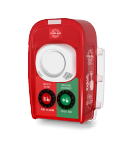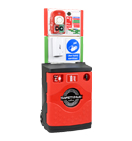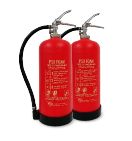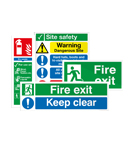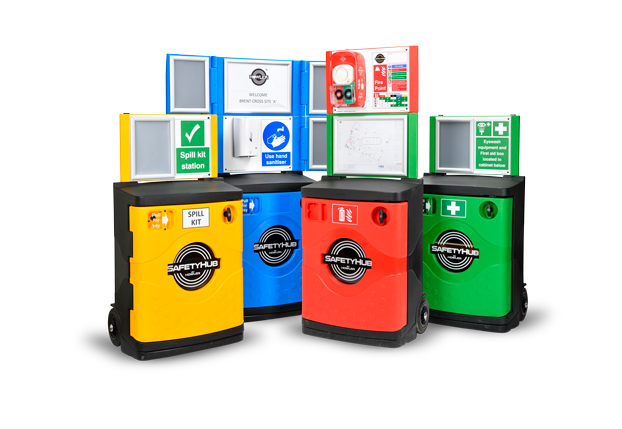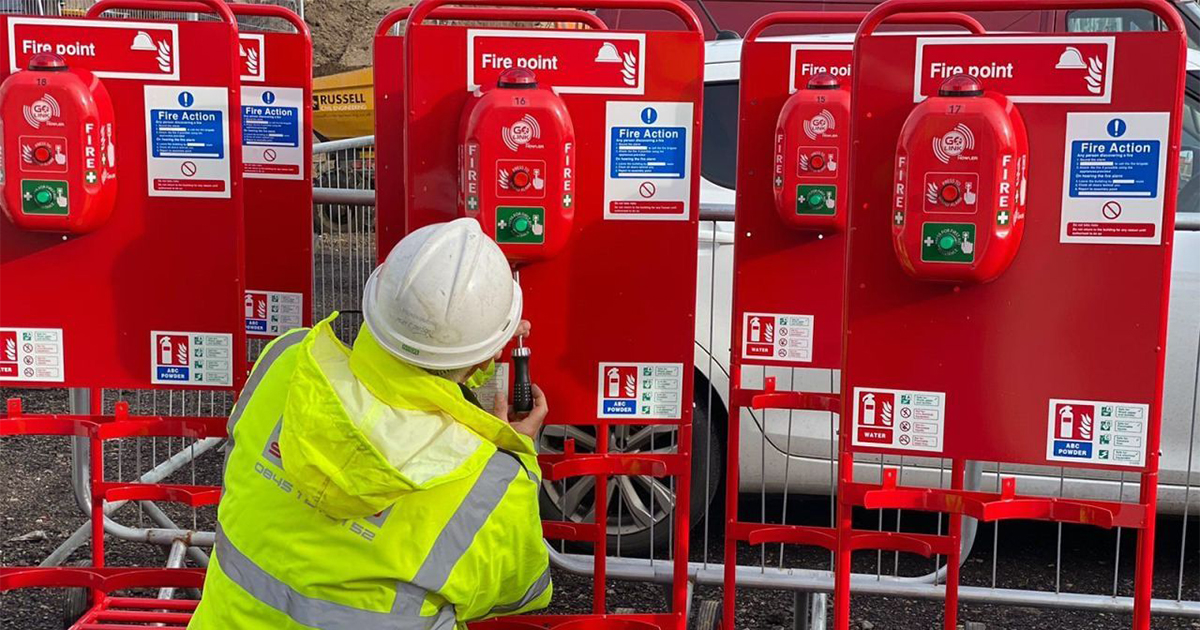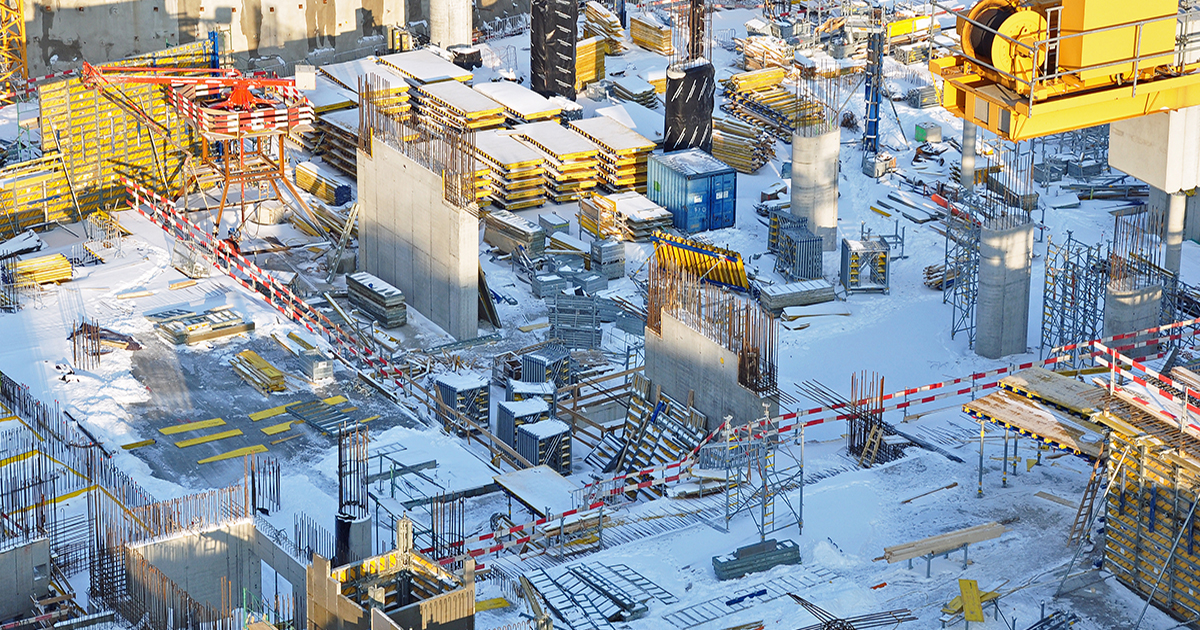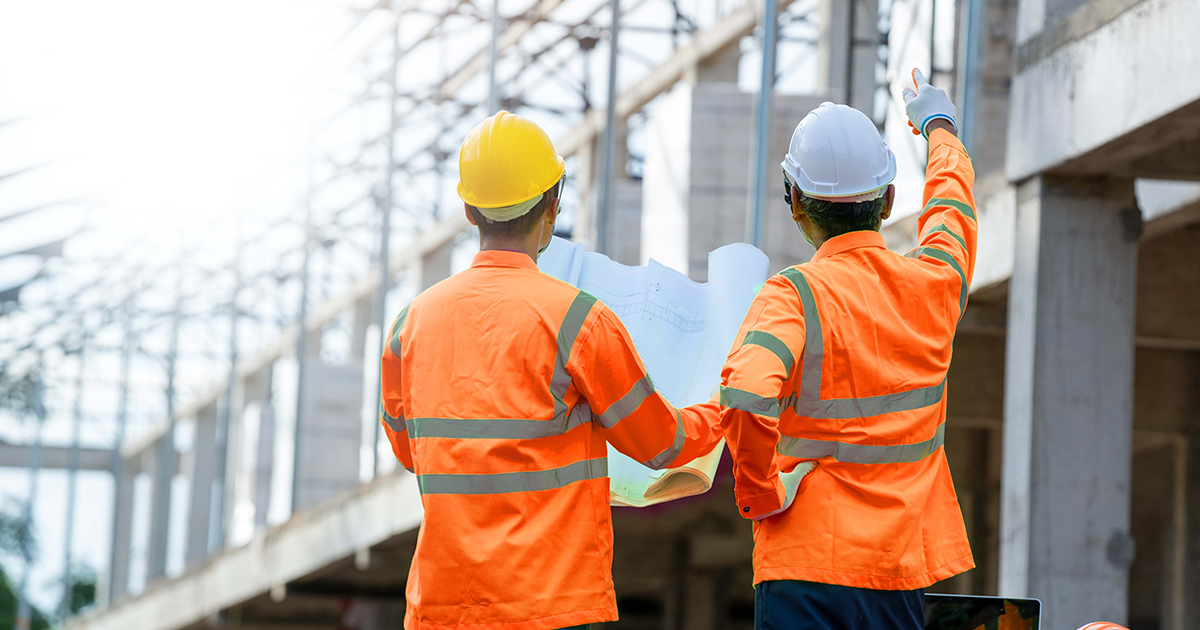Fire Alarms
There must be some means of raising the alarm on any construction site. HSG 168 states that the fire warning signal must be ‘distinctive, clearly audible above any other noise and…recognised by all the people on site’.
- on very small sites, ‘word of mouth’, or the provision of a small self-contained fire alarm unit may be enough
- most construction sites will need an inter-connecting (wired or wireless) system with call-points and sounders to provide adequate means of raising the alarm
- additional requirements for particular workers or types of work should be addressed (eg visual warning indicators in areas of noisy work or for workers with a hearing impairment)
- automatic fire detectors (smoke/heat) should be installed in TAUs (temporary accommodation units, eg site offices/canteens) or where a fire might develop unnoticed. On all but the very smallest of sites, these should be connected to the fire alarm system, (ie not a stand-alone domestic type fire alarm.)
On a refurbishment project, where an existing system is still working, it is best to keep this in use as long as possible or to fit the new permanent system as soon as possible in the construction sequence. Where this is not possible, or when electrical systems are being worked on, a temporary alarm system must be provided to ensure cover is continuous throughout the building period.
Any fire alarm system must be checked weekly by a competent person, and details recorded.
Fire alarm systems should also be serviced periodically and maintained in good repair by a competent person appropriately trained.
Obviously, as the site progresses, the fire alarm system will need to be moved/extended to ensure complete coverage at all times.
Fire Extinguishers and other Fire Fighting Equipment
- Fire fighting equipment should be provided at identified fire points around the site, in addition to extinguishers provided for specific activities (eg hot work) or areas (eg LPG or plant storage)
- Extinguishers should be predominantly red in colour, (or have appropriate signage) and be located on hooks or stands to keep them above ground level. Stands help to identify a fire point and also ensure that any missing extinguishers are noticed in view of replacement.
- To ensure adequate coverage for common types of fire, it is recommended that there is at least 1 x 9L Water or Foam extinguisher and 1 x CO2 extinguisher at each fire point. These can be substituted with a Powder extinguisher if necessary. Water extinguishers can be substituted with a fire hose reel if required.
- Fire points should be located in conspicuous positions close to final exits.
- All extinguishers should conform to a recognised standard and be serviced at least annually in accordance with BS 5306. (different conditions apply to self-service extinguishers – see our product brochure for more information)
- As with fire alarms, provision of fire extinguishers should be reviewed as work progresses.
- Use of fire extinguishers by site workers should be limited to those trained in their use, to fight small fires or to aid escape. Larger fires should be left to the Fire & Rescue Service!
This is a very brief overview, but for more detail visit our Resources Page, where you can download whitepapers on Fire Extinguishers on Construction Sites and Fire Warning Systems on Construction Projects.
Put life safety first and stay compliant on-site with Howler UK. Talk to the team today for more information on 0330 7000 777 or email [email protected].
